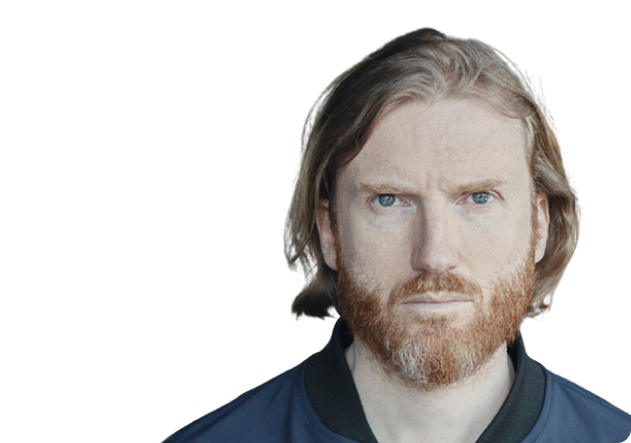Good Design is needed for better future
The future of design is likely to be shaped by a number of technological and cultural trends. Design trends will showcase...",

Loic is a highly passionate and accomplished creative leader serving as Director, Experience Design - Executive Board Member at Valtech. His dynamic career has spanned across major cities like Paris, Geneva, London, Berlin, and Zurich, working with prestigious brands such as Adidas, Mercedes, and Sony. Recognized globally, he has garnered awards for his work worldwide. Committed to lifelong learning, especially in digital experience, Loic champions empathetic, sustainable design and collaborative innovation. He explores AI, creates NFTs, curates art exhibitions, and speaks at various events.
Let us quickly get to our expert's point of view.
Ans : In my opinion, the secret to any great design resides in understanding the real challenge at hand. I would add that the second is to provide a great (innovative, bold or disruptive) and well-crafted solution for the discovered challenge. It is about showing excellence in both spaces of the double diamond - one being building the right thing, the second being building the thing right.
Understanding a challenge is about approaching users/customers up-front, making sure we see through a user/customer lens. As we know, this user-centricity is the cornerstone of Design Thinking. I’ve seen a deep evolution of Design Thinking during the last decade, but its foundations are still relevant today.
The planet-centric point of view (which encompasses the user-view with our planetary boundaries) is - luckily - taking more space in companies as time passes by, and as sustainability takes more space in our daily lives.
Is it easy to implement? Based on my past experience, I would give it a no. Especially in the turbulent times we’re currently living in. But there is hope.
In order to function, user-centricity should be sponsored by the upper management and be a strong part of the company's culture. Not a tool, but a state of mind.
I see more and more leaders who are advocates of Design Thinking joining or being part of companies at board levels and in higher management positions.
Some companies have started to refocus their growth-above-all strategies with stronger respect for their users.
Ans : Data turns opinions into facts. And as a consequence, Design without Data is pure taste or gut feeling: it is called Art.
I believe that nowadays, experienced designers are used to working/creating with the help or within boundaries of Data (qualitative/quantitative), able to set data foundations to validate or invalidate their choices and track and measure data to empower their solutions.
Successful products or services are usually tracking their experience with continuous data measurements, which enables the product teams to steer in the adequate direction. Simply put, Data helps to define success.
That said, Data should not be the single source of truth, because it is not neutral. It is a product influenced by the context in which it has been generated.
Interpreting and analysing data requires a neutral approach in order to avoid unconscious biases as much as possible
Ans : There are several trends currently in the Design space.
From an experience standpoint, I believe speciality - the ability to move in 3D spaces - is getting increasingly popular. I believe flat interfaces will give way to interfaces integrated into our spaces and our daily lives.
On the other hand, I believe Designers and Designers will clearly help to push for ethical and sustainable behaviours. I believe in my peers pushing for integrity, in a world where equity is getting lost for the sake of business and growth. The future of Design is about creating and managing new behaviours that are more respectful of the people and our planet.
The future of Design is also driven by AIs and AI assistants. It will be less about creating, and more about curating and knowing how to accurately voice ideas. It will be about humans and computers working together, doing things that neither could do alone. I have a rather utopic view on the topic, as I believe in technology being at the service of humans.
In the far future, I believe we will be even more digitally connected and assisted. Designers need to help in shaping this future, in how we will handle privacy, and data management, but also making sure we do not lose our humanity and social connections, by letting technology take over skills and knowledge.
Ans : I describe myself as an endless learner. I love to produce and improve my craft, study new tools and methods, and also shape my leadership and business skills. After winning a significant amount of awards/prices/recognitions during a decade - in advertising and marketing, I decided it was time for me to enable and empower other individuals by managing creative teams. I've been leading experienced teams for 10 years now.
Titles have changed, and fields have changed, but at the end of the day, we all focus on the same things, as stated in the first question: coming up with innovative or disruptive solutions or ideas for any given problem (deeply understanding the problem at hand), and delivering state-of-the-art and well-crafted experiences (delivering the best solution). That said, being an expert and a manager at the same time can be quite challenging, but I still try to balance both out. I undeniably need to practise with my tools and open my software, to figure out or create things on my own.
Ans : I would not oppose both, we’re talking here about two different things. AI is a tool, and UX is a discipline. But it is, and will be massively changing the way we work as Designers.
I’ve seen our disciplines transforming over and over again since I've been in the digital-design field (more than two decades), which requires a high level of resilience, and a constant adaptation to change. As an experienced designer, you really need stamina to adapt to the Zeitgeist. And the empathy that goes with it. Which means: adapting to new processes, methods, tools, behaviours, cultures…
For roughly 3 years (for the general public) we have had this “new” thing called AI, that automates, rationalises, delivers and creates for us.
But there will always be the need for someone to pilot these AI-enhanced tools. Designers are becoming more curators than creators, where the ability to communicate ideas in great detail becomes crucial.
Ans : I guess intelligence and creativity are very correlated constructs. Both are cognitive abilities that complete each other and I think that balancing both is very delicate.
A strong foundation of knowledge and research is crucial for innovation. I use reasoning and understanding in order to create a contextual foundation that serves as a scope for potential ideas and novelties. This means that in order to be creative, disruptive or unexpected, I need to have a deeper comprehension and documentation of the systemic context at hand. Using the Double-Diamond metaphor again, I tend to use the mind in the problem space and the guts in the solution space.
That said, I believe creativity and innovation happen when you mix brilliant and diverse people. It is a team sport.
Ans : Design is a discipline that is in constant flux, and asks for a lot of adaptation, change and resilience. The pace is quite high so it definitely requires a lot of stamina.
Also, it is very important to keep a “continuous-learner” approach, in order to adapt to what is coming next. Being ready to fail, staying curious and being adaptive are key.
Technology should be an ally, not a threat. And no matter how powerful the tools are, it is important to sharpen your craft in order to retain your artistic sensibility. Knowing the fundamentals is extremely important: in order to break the rules, you first have to master them.
And Finally, Design is about people. I’m a strong believer in the proverb “If you want to go fast, go alone; if you want to go far, go together”. Try to stay engaged with the community, co-creating whenever possible, and connecting with new and diverse people, even across disciplines.
There is real strength and plenty of learning opportunities in the union.

Senior Consultant
Leave your details so we can contact you back.